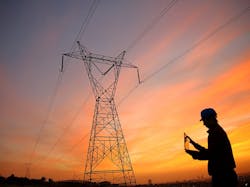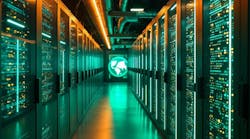A Smart Grid that Includes Data Center UPS Units: A Potential ‘Win-Win-Win Solution’
The grid as we know it is limited by an aging design, despite incremental improvements over the years. What is the potential of the so-called Smart Grid? This new special report series explores the future of the sustainable data center and the American power grid.
Get the full report.
The grid that provides most of the electrical power in the U.S. was designed in the 1890s and has been incrementally improved upon, but is limited by its aging design. Power needs in the home were modest in the days the grid was designed. No one conceived of 500-watt PCs, electric ovens and battery-powered cars, much less 100-MEGAWATT data centers.
The grid was designed to be a one-way path from the utility to the customer, who was billed monthly. The scope of power outages has been steadily reduced through sub-zoning, but failures today still have the potential to affect a lot of people. Perhaps the greatest shortcoming of the current power grid is its “one-wayness”. It was designed as a conduit between a utility and its customers. While the network has been upgraded over time to permit two-way transmission, there is still no easy way for customers to exchange electricity with each other. This has increasingly become a liability as many homes and businesses have become miniature power stations, often generating more electricity than they need.
A Smarter Grid is Coming
The US Department of Energy’s Smart Grid initiative reimagines the power grid in a manner similar to the Internet. The 9,200 electric generating units on the current grid would be complemented by thousands of switching stations that intelligently route power between nodes as needed. Customers could form collectives to share the power they generate to lower costs or improve reliability. Blackouts would last minutes instead of hours. The overall resilience of the grid would improve and sustainable sources become more practical to use.
A Smart Grid that includes data center UPSes has the potential to be a win-win-win solution for all parties.
Researchers at leading data center technology companies are developing technologies that can make UPS units smart nodes on the energy grid. The 80% of the average data center UPSes that go unused could become a node on the network, offering temporary power storage and provisioning. UPS batteries could not only serve as backup power sources in case of an outage, but because UPSes inherently deliver a more stable flow of power, they could help to compensate for fluctuations in power levels and quality across an entire grid.
For example, the UPS battery capacity needed to power a 15-megawatt data center for five minutes could supply electricity to approximately 15,000 homes for the same duration. While five minutes doesn’t seem like a long time, it is more than enough for utilities to rebalance capacity during periods of high demand or disruption. Power could be rerouted through the smart grid so quickly that most consumers wouldn’t even see their lights flicker. UPSes can also mitigate the impact of power surges that damage delicate electronic equipment, enhancing the overall quality of the grid.
There are currently only a small number of data center operators engaged in smart grid experiments, most of them in Europe. However, improvements in technology, combined with lower costs will make this option widely available within a few years. The data center technology companies that are leading the charge will bring these benefits to their customers first. Some are even developing technologies that will enable existing UPSes to be retrofitted as smart hubs on the smart grid.
In the coming weeks, this Data Center Frontier Special Report series will explore tackling water usage, bracing and embracing change in the data center industry. Catch up on the first entry, as well — New Concepts of the Sustainable Data Center Arise Amid an Evolving Market.
Get the full report, “The Rise of the Sustainable Data Center,“ for a new special report from Vertiv and Data Center Frontier explores the future of the sustainable data center and its impact on the industry.


